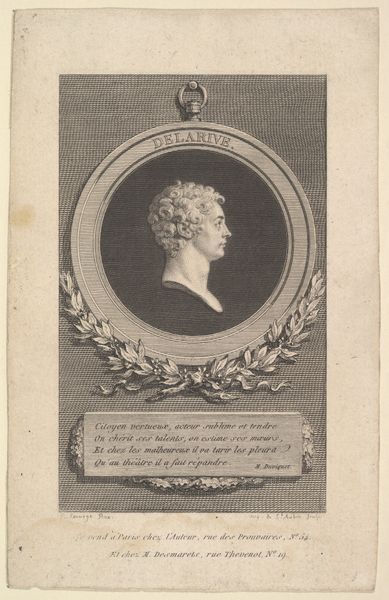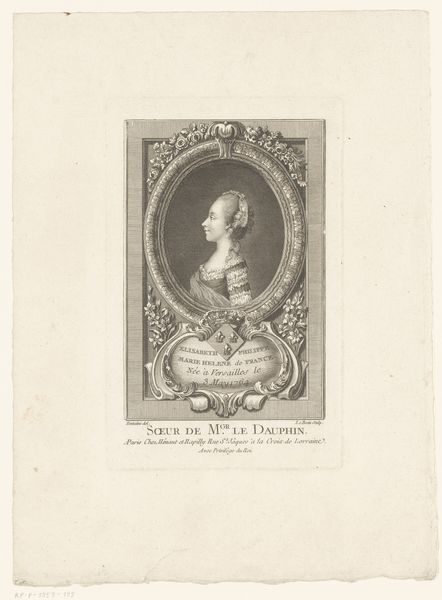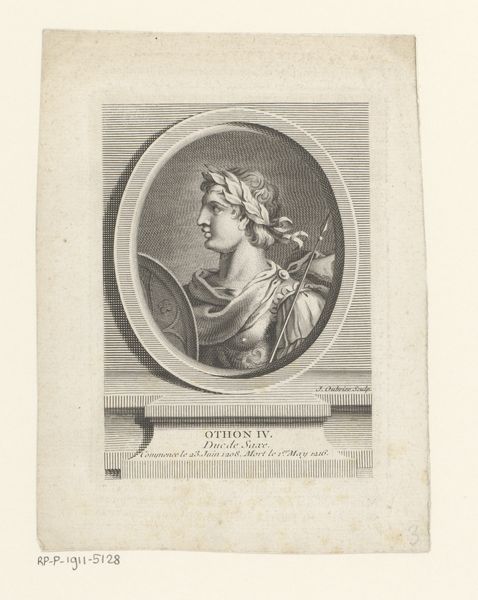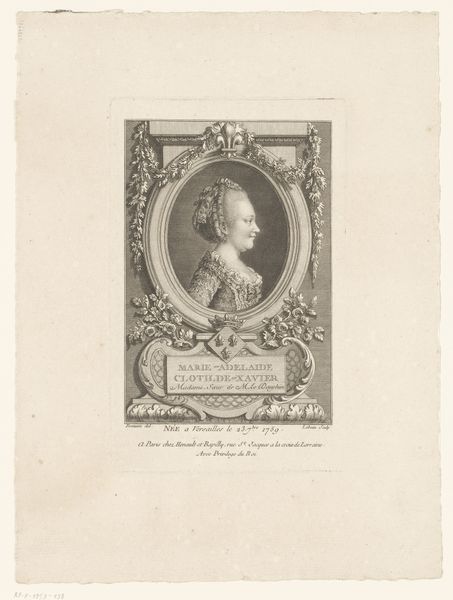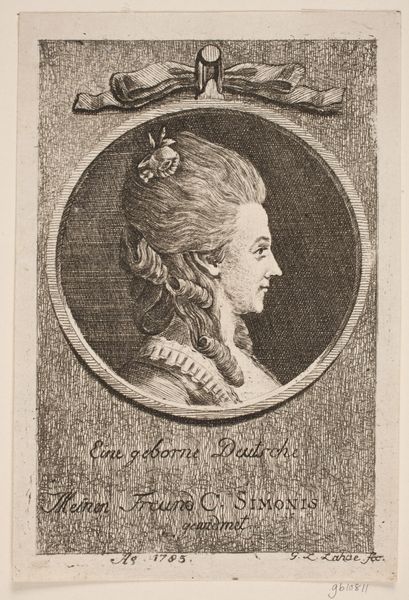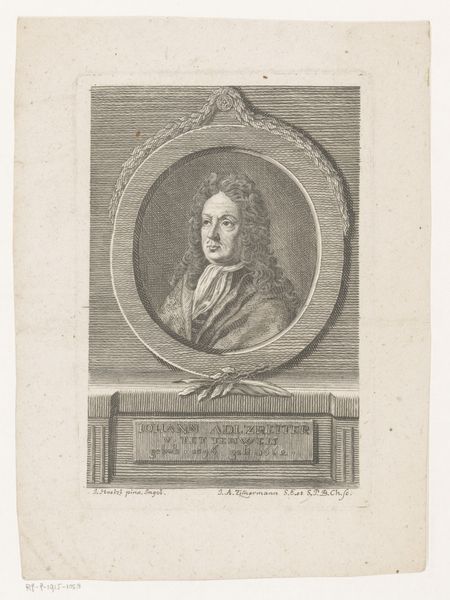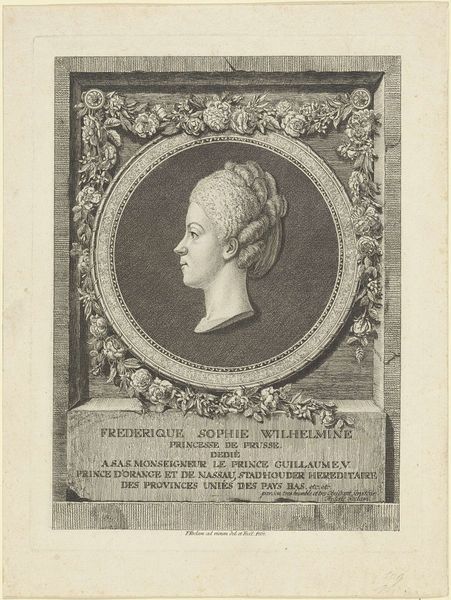
print, engraving
#
portrait
#
baroque
# print
#
history-painting
#
engraving
Dimensions: sheet: 11.3 x 7.8 cm (4 7/16 x 3 1/16 in.)
Copyright: National Gallery of Art: CC0 1.0
Curator: This engraving presents a profile portrait of Marie-Thérèse, Holy Roman Empress, rendered in delicate lines by Jacob Adam. The Baroque influences are evident. What strikes you immediately about this print? Editor: The intricacy is the first thing, those densely packed lines forming the gradations of light and shadow—a tangible, textured surface achieved purely through the manipulation of metal on paper. The floral cartouche seems at odds with the formal inscription block—it’s all vying for attention. Curator: Indeed, the contrast highlights a deliberate formal strategy. Note the oval frame echoing the Empress’s powdered wig. Its monumentality resides in its subtle compositional balance and intricate line work. The way the head precisely nestles, centrally, creating perfect harmony and order within the chaos. Editor: Thinking about the material aspect, these engravings were mass-produced. It makes you consider Adam’s labour, each precise cut into the metal plate replicated hundreds, possibly thousands of times, for distribution. It makes one wonder what was the purpose? Who could afford them? Curator: Absolutely. The function can be interpreted as a tool of political representation and soft power. Through dissemination, engravings like this bolstered the image of the Empress. Editor: The detail that would be manually achieved with such crude tools! Even in this smaller, reproducible form, we sense the intent behind her portrayed dignity, its accessibility becomes intriguing considering who controlled these production mechanisms. Curator: It's a remarkable distillation of power, rendered accessible yet maintaining a veneer of inaccessibility due to its detailed craft. The frame further suggests the careful placement of its subject in time, it is as if to say this is but one part of a complex structure that forms history. Editor: By engaging with the labor inherent to the material production we have seen how something beautiful and impressive is made through strenuous labour. Curator: Exactly. By exploring the relationships between the artwork's formal strategies, its themes of power and context, we can build new ways to view this complex work.
Comments
No comments
Be the first to comment and join the conversation on the ultimate creative platform.

